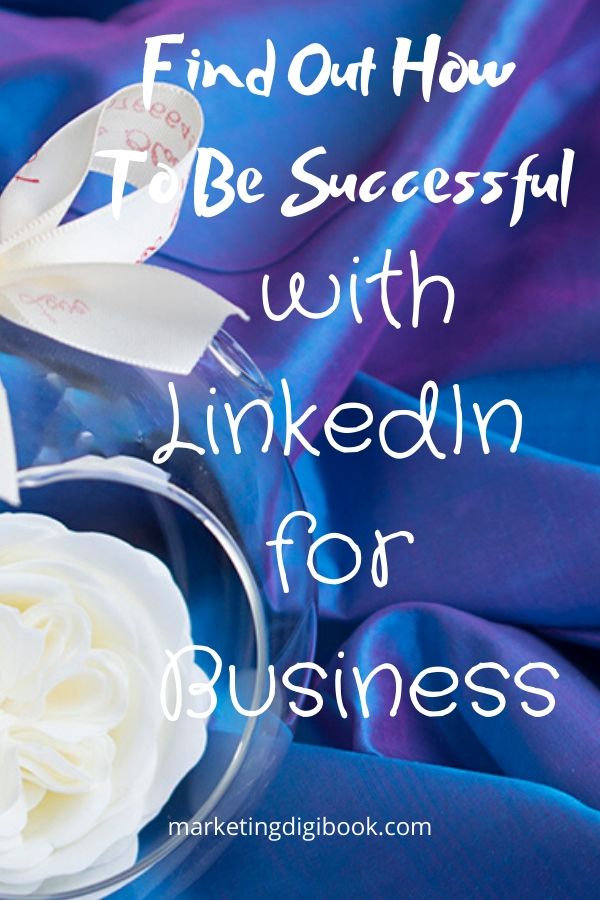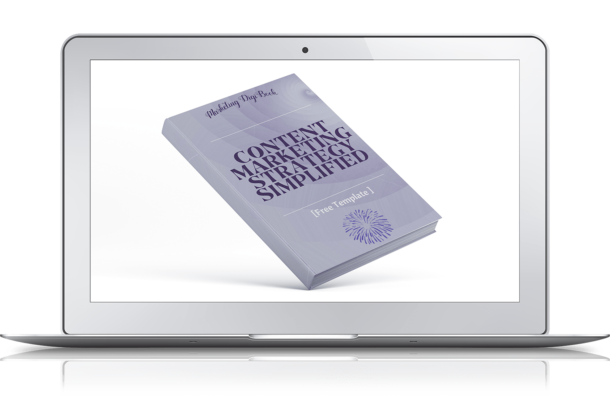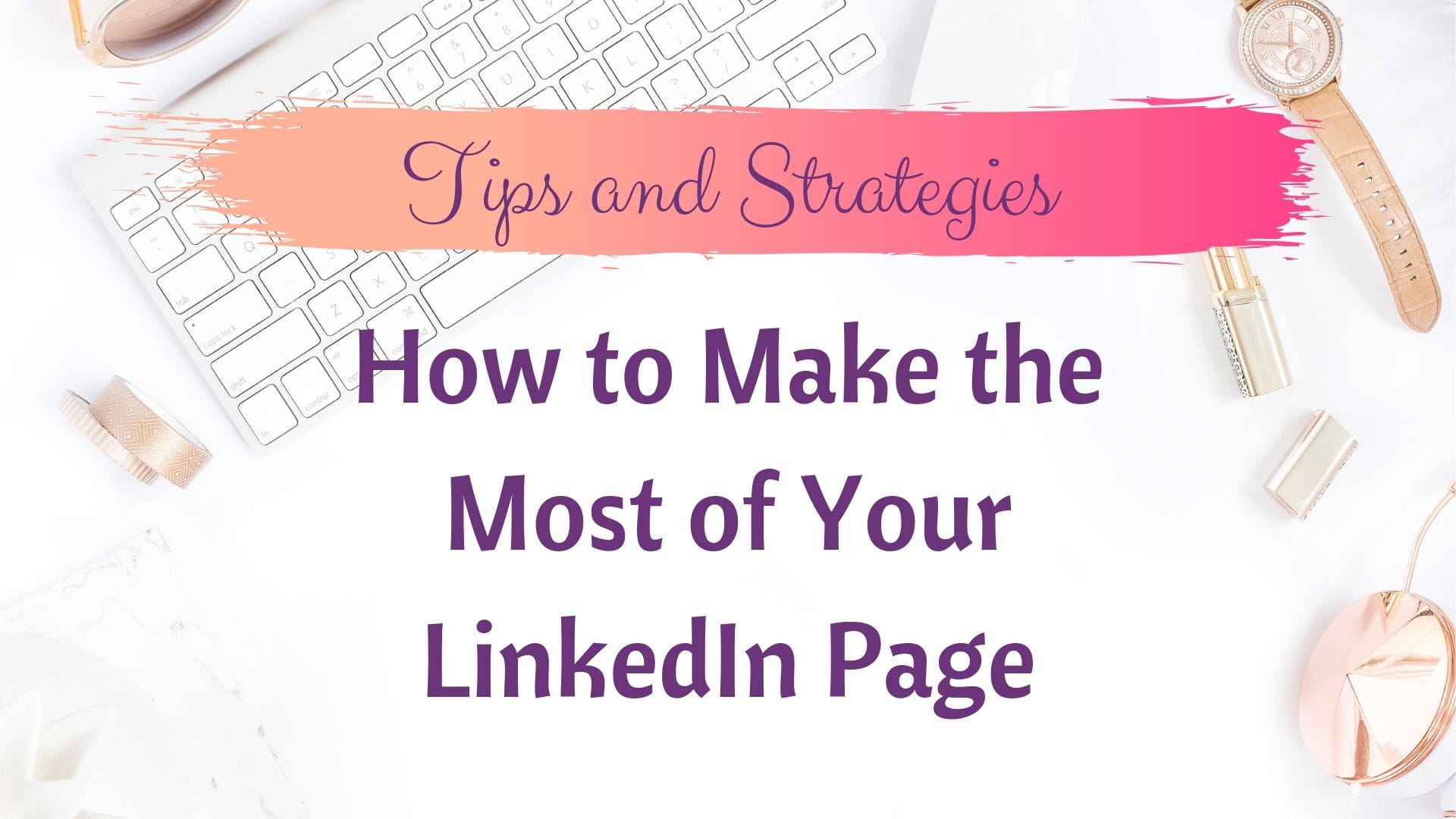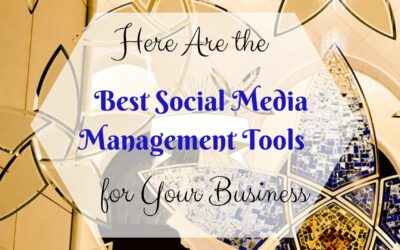There’s no secret that the power of social media is incredible. Everyone knows about Facebook, Twitter, Youtube, and Instagram. However, when it comes to LinkedIn, we are talking about a special case. This social and professional network is a powerhouse, ready to unleash its benefits to your business’s advantage.
LinkedIn is a great tool to help you strengthen your presence on the market and expand your network. There are various LinkedIn best practices you can use to increase your business development. Some of them can be implemented right away while others will take a bit of time to show their efficiency.
The way you build your personal brand tells a lot about yourself.
The events of 2020 have seen many people out of work. But as the world economies struggle to get back to normalcy, LinkedIn being the existing top platform for professional connections continues to see a remarkable increase, especially among job seekers. And other professionals trying to channel the next career move. LinkedIn has put more weight and relevance on its digital training tools to help job seekers and other professionals better align themselves with emerging trends and opportunities.
So, with all things going virtual, what are LinkedIn’s best practices to help you connect better?
Let’s Make Your SEO & Content Work Better for Your Business
Top LinkedIn Best Practices for Business
Have you ever wondered why is LinkedIn so powerful for B2B businesses? First, according to the latest estimations, there are approximately almost a billion people using this network. Therefore, it is easy to imagine that there are over 830 million people with whom you can connect and share your ideas. Part of them is your future clients and partners. Plus, over 55 million companies have Linkedin profiles.

It is worth mentioning that 61 million LinkedIn users are considered to be senior-level influencers and over 40 million LinkedIn users are in key decision-making positions.
Researches reveal that:
– 80% of B2B leads are generated by LinkedIn compared with 13% on Twitter and 7% on Facebook.
– 92% of marketers active in B2B confirm that LinkedIn is a leads pipeline for their business
– 46% of traffic delivered by social media for businesses as LinkedIn as a source.
Moreover, LinkedIn is appreciated as a high-quality source of content. This makes users become very engaged when using it and count on it in their business decisions. Even though it is a valuable resource for any type of business, this doesn’t mean that success is guaranteed.
If you really want to have a competitive advantage when using LinkedIn, you need a forthright strategy. Since it is a marketing channel that can change the face of your business, it should be granted special attention.
Before we dig more in-depth, here is a short list of LinkedIn best practices for business that you can implement today:
· Develop SMART goals for your LinkedIn marketing strategy. Just like in any marketing strategy, your goals should be specific, measurable, attainable, relevant, and time-based.
· Reach the right target audience. LinkedIn offers you various demographic data which can help you develop specific audience segmentation. Therefore, it will become very easy for you to personalize your messages and grow your audience.
· Create the right messages. Your messages should give answers to your client’s questions and provide solutions to their problems.
Now that you got yourself familiar with what LinkedIn means and how it can help you, let’s dive into more details. Use the strategies below and get ready to revamp your business.
LinkedIn Best Practices 1: Strengthen Your LinkedIn Profile
The first thing your clients and business partners see when they want to know more about you on LinkedIn is your profile. It is your business card and it should show you in the best light possible.
So, you need to pay close attention to the way you present your business, your story, and your services. Your LinkedIn profile logo and background photo are extremely important for the first impression. LinkedIn best practices for profiles encourage you to use recent photos, not exaggerate with powerful colors and use symbols that represent you. As long as you don’t complicate things too much, there’s nothing that could go wrong.
Other useful tips when it comes to your company’s profile are the following:
· Your LinkedIn company page should be always up-to-date;
· Your summary section should talk about your fascinating story. People like to read about others. They feel immediately when you are telling the truth, or you are just writing nice words. So, be real and speak from your own experience;
· Use your company logo and keywords to help clients identify your LinkedIn company page faster;
· Optimize your profile for search on LinkedIn by using your main keywords;
· Highlight your most important products and services and rearrange sections to align with your strategy. If you really want to stand out, try a high-quality video or explainer video to present your products/services.
· Ask your clients to share their experience with your products and services by writing reviews and testimonials. This is how you show your future clients that you are reliable, and your products are exactly how you present them to be;
· Attach a ProFinder Badge to your LinkedIn profile if you are a solopreneur or just starting up.

LinkedIn Best Practices 2: Use LinkedIn’s Educational Nature
Another remarkable thing about LinkedIn is that it makes it very easy for its users to publish articles. However, if you think that you will write some promotional content that will sell your products immediately, you are totally wrong. The people who are using LinkedIn are not interested in just another promotional post that encourages them to spend their money on a specific product.
LinkedIn users are rather more interested in how your products will help them solve their problems. They have several questions for which they hope to find the right answers by reading your articles. So, you should focus on educating your customers and giving them practical solutions to their problems. This is how you build your brand’s credibility and show that you are an expert in your field.
Best Practice 3: Conceive LinkedIn Showcase Pages That Target a Certain Buyer Persona
You have the possibility to create niche pages related to your main Company Page via LinkedIn Showcase Pages, highlighting specific products or a targeting specific audience. This helps you personalize user experience and communicate more effectively, as users have the possibility to follow just a showcase page, not the main company page or other showcase pages that your company might have installed.
Best Practice 4: Optimize Your LinkedIn Page for Search
Optimizing your LinkedIn Company page enables you to target your audience better and thereby gain better visibility among relevant audiences. You can optimize your LinkedIn page by using keywords though the whole profile and mainly through the company description.
Keywords – You can incorporate specific keywords and phrases that your target audience is likely to use when searching for your product or services. Ensure to insert them in your “About” overview. This will better describe what your business is all about.
Link it to your page – another way to optimize is to link your LinkedIn page to your website. Clean up all your team member profiles often to ensure they’re always up to date.
Post relevant content – this cannot be emphasized enough. When you share relevant content using all the relevant keywords and key phrases, you boost your chances for your LinkedIn page to appear on search results.
[interact id=”5b8ed2e728483b00147dabf7″ type=”quiz” mobile=”false”]
LinkedIn Best Practices 5: Focus on Visuals
There have been many studies revealing that humans react better to visual context. We are visual creatures which make us understand visuals a lot faster than any text. Thus, if we apply these findings to the internet world, it is already a fact that visuals get more views than content. So, this is one point you should focus on in your LinkedIn strategy.
One of the LinkedIn best practices in 2023 which will continue to be successful in the following years too, is using infographics and charts in your articles. Your readers will find it easier to understand the information and remember it when they need it in the future. So, if you already applied this strategy last year, you should continue using as many visuals as possible in your content.
LinkedIn Best Practices 6: List Your Relevant Skills/Business Offer
This sets you up for quick wins, there are many life skills/benefits, scroll down and identify the ones most relevant to you. This is the best way to validate your description under your Headline Summary.
It also gives an extra nudge to others to endorse you since you come out as a professional and an expert. Therefore keep relevance by listing only your most relevant skills, and this is one of the continuous LinkedIn profile best practices that you have to refresh every now and then.
LinkedIn Best Practices 7: Tell Your Story Using Videos
Keeping your audience engaged and enticing her curiosity concerning your products is a tough job. Taking into consideration the soaring popularity of videos, you can use them to convince your prospects to return. Furthermore, it’s easier day passing for your clients to be able to watch videos from their desktop or mobile devices, no matter their location across the globe.
Here are some ideas you can use to create new videos:
· Create a demo on how to use your products;
· Interview an influencer in your industry/niche who is open to sharing his/her opinion on your products or services;
· Interview customers and publish their video testimonials;
· Create a video story of your brand.
LinkedIn Best Practices 8: Leverage on LinkedIn Live
As statistics reveal, video performed so well that LinkedIn has recently rolled out LinkedIn live. It has 24 times more engagement than regularly pre-recorded videos. The main difference between LinkedIn live and other social media live events is that the audiences on this platform are part of a professional network. Thus, their main goal is to network further, learn and discover more in their related fields.
The LinkedIn best practices for live include:
Be prepped – ensure you’re well-versed on your subject matter to be able to give a sufficient response. Also, prepare well for the whole show ensuring quality sound, light, and stable connectivity.
Be authentic – be as genuine and real as you possibly can. Offer your audiences relatable and fresh content.
Consistent – Once you pick this new format, ensure to be consistent. Pick an ideal time when most of your audiences are online and let them know of a regular specific time that you will be going live. Whether you choose to do it weekly or monthly, let them know when to expect new content.
Be interactive – engage your audience as if you were all in a real room. Moderate the whole session in a lively and engaging manner and respond to them as much as you can.
When these LinkedIn best practices are followed well, you can utilize this format as a unique and interactive way to directly show your services and products in a better way.
LinkedIn Best Practices 9: Be Consistent
No one sustains that LinkedIn is going to bring incredible results overnight. It takes a lot of consistency and hard work to show your clients that you are a reliable business owner who puts them on top of his priority list. Therefore, you should pay attention to keeping your content fresh.
The publishing frequency is also important. So, if you post a new article at least once per week, then you are on the right track. In addition, try to always be the first who announces your loyal customers when something new appears in your niche. You will see that all these efforts will pay off in the end.
LinkedIn Best Practices 10: Share Thought Leadership Content
You can consider it authority marketing or thought leadership, but this is one of the most important LinkedIn best practices for business in 2023. It’s the kind of content that you need to create in order to build credibility, impress hiring managers, or reinforce your brand.
It’s about leveraging your best knowledge and expertise and offering solutions and answers even to questions your audience is yet to ask. Here is a quick guide on how to approach thought leadership content:
Product – You know your products best; you can therefore show this product expertise in a context that offers help and solutions to your audiences’ problems.
Industry – Share expert knowledge about your organization or industry, and give your connoisseur a take on new trends and technologies making news.
Organizational – Create content about your organizational stand or approach on various business aspects. Talk about employees and how to treat them, talk about your shareholders or other stakeholders in your business.
LinkedIn encourages users to use thought leadership content on their LinkedIn company page because it’s a powerful way to grow your audience.
LinkedIn Best Practices 11: Know The Best Time to Post
Unlike the rest of the social media platforms, LinkedIn does not have a specified time that can be considered the best time. With this said, there are certain times of the week that are definitely better than others.
Posting your content between Tuesday and Thursday is considered ideal. The ideal hours in these 3 preferred days fall between 8:00 am to 2:00 pm in your time zone. While the less recommended time to post would be on weekends or outside working hours. This is typically 9:00 am to 5:00 pm.
To narrow it down a little further, depending on your business, the best time to post for B2C businesses is between 11 am to 2 pm. For B2Bs and most tech and software businesses should be mostly between 9 a.m. to 5 p.m., obviously. For education and health care, the best times are between 11 a.m. to 1 p.m.
But all the above suggested times are quite general, to really get that perfect time for your LinkedIn profile, use your personal data found in LinkedIn analytics. They will give you more detailed insights about your profile and how to best optimize it for excellent results.
Best Practice 12: Don’t Underestimate the Power of Your Employees
Your employees can become your strongest partners in promoting your business. Who else can better promote your products than your employees who know all details about them? LinkedIn best practices encourage entrepreneurs to listen to their colleagues’ ideas and publish them. Sharing your LinkedIn strategy with your employees will help you grow your business presence in your industry.
This is a good approach if you want to show your employees that you care about what they think, and you want to make them part of your business. They will become more loyal to the brand and be more open to contributing to your business’ growth.
So, adopt a smart strategy and accomplish a double goal: grow your employees’ productivity by listening to their ideas and strengthen your presence on the market.
Best Practice 13: Use LinkedIn Analytics to Measure Results
Even though you think you are doing things right, this doesn’t mean that you are really successful. You need clear data to show you how many people viewed your LinkedIn page, which were your most popular LinkedIn posts, etc. LinkedIn metrics will tell you everything you need to know when you analyze your LinkedIn marketing efforts, like:
· Your visitor’s demographics. You will know everything about the people who visit your LinkedIn page: where they live, which are their jobs, how old are they, etc.
· The number of page views during a specific period.
· How many unique visitors you had during the analyzed period?
· Identify what your competitors are doing and what their metrics look like.
· Engagement statistics.
· The number of new followers acquired.
If you belong to the LinkedIn Business Solutions category of clients you benefit from Content Marketing Score and Trending Content resources. The Content Marketing Score provides you with insights related to user engagement on your sponsored LinkedIn posts, LinkedIn pages, Linkedin groups, or Influencer posts if the case. And also showcase recommendation to implement in order to improve your numbers and the results of your LinkedIn content.
LinkedIn Best Practices 14: Study Other LinkedIn Company Pages
LinkedIn has a tool called Companies to Track. And no, this isn’t about snooping. This useful tool found at the bottom of the followers’ tab is great for helping you with your LinkedIn marketing strategy.
It shows you other businesses that are similar to yours and metrics such as their social engagement, number of followers, and follower growth. You can use this information as a yardstick for the performance of your LinkedIn company page. It can help you tell whether your company page growth is steady compared to other similar LinkedIn company pages with a similar average number of followers or if it needs tweaking.
You can use it to measure how well your content drives social engagement and the type of content that performs the best.
LinkedIn Best Practices 15: LinkedIn Ads and Sponsored Updates
In case your budget allows it and you want faster results, then you can use LinkedIn ads to amplify the power of your content. LinkedIn offers you a bunch of features allowing you to target and refine the target audience you want to communicate your message to. For instance, you can target specific job titles or industries. Therefore, your messages reach exactly the type of people you need in order to grow your business.
You can find out in the video below more details why LinkedIn is a prominent channel for B2B advertising:
Best Practice 16: Create Your Own Group
Creating a group can be a smart decision only if you have a strong number of followers who will form a solid foundation. People look for evidence before they join a group. Therefore, you need to count on your connections who can convince new followers to become active in your group.
And of course, you need to be aware of your competition. There are many groups on LinkedIn, in fact too many, especially promotional ones. This means that you have a mighty competition. If you want your group to be successful you need to bring a new and interesting idea to the table. Moreover, apart from promoting your products, you need to create discussion topics and encourage people to share their ideas.
Now LinkedIn Groups integrate into the main site and mobile apps, they are more user-friendly, more engaging, and integral part of the prime LinkedIn experience. Groups benefit from an admin functionality and have the capabilities of being managed via Android or iOS apps.
So, if you are planning to have a group on LinkedIn this is a great moment to start.
Best Practice 17: Nurture Your Connections
If persons from your connections list take some minutes to say something positive about your business, then you should show them how much you appreciate it. Always leave a comment when you receive feedback from one of your connections. If the person who commented is not on your connections list, then this is a fantastic opportunity to connect with them. You can also stand out by replying to the people who send you a connection invite. People are so busy with their activities that they don’t pay so much attention to the power of these small actions.
There is no doubt that LinkedIn is a powerful tool that can boost your business. These best practices will help you use your talent to its fullest potential and show your clients that you have something to say in your niche.
If you use this platform for your personal profile, you can also apply the tactics listed above. LinkedIn is great when you want to stay updated with the latest trends in your industry.
Conclusion
Implementing a LinkedIn strategy is definitely not as difficult as it might seem at a first glance. It is a powerful tool for those who want to leverage their business. These practices show you that this is an achievable goal. The above-mentioned LinkedIn best practices for business in 2020 will help you build a stronger profile and reach more customers than ever before.






